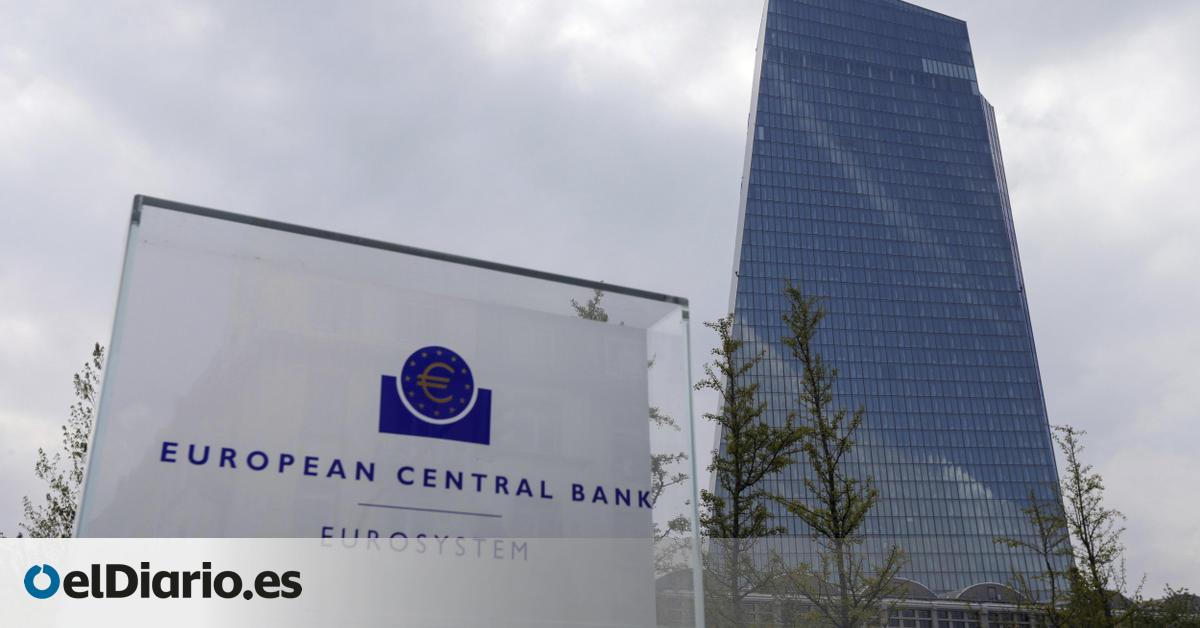The birth of the current and faltering post-Covid business cycle required $12 trillion in fiscal stimuli, released by governments in the form of aid to households and guarantees to companies. Another 7.5 trillion were forged as protective shields – for liquidity and debt containment – by the central banks to guarantee the circulation of money and capital.
It was not the first time that the monetary authorities took out their bazookas. During the credit collapse of 2008, they were already used at will to suture the accounting wound that the toxic high-risk assets – swaps, structured and derivatives – designed by the hedge funds and the promiscuous formalization of mortgages in hot real estate sectors such as Spain instilled in the banks.
The Federal Reserve, for example, released 4.8 trillion – a figure similar to Germany's GDP – and the European Central Bank (ECB) another 2 trillion – an amount somewhat less than the size of Italy's economy – in the Great Pandemic. The doctrine inaugurated by Mario Draghi ten years earlier was followed to save the euro from the debt crisis of European monetary partners.
Then, the neoliberal crusade raised a cry for the massive purchases of sovereign and corporate debt – without defined limits – and its near-zero interest rate policies that, in its opinion, distorted the effects of the austerity imposed since the EU at the behest of Berlin.
However, not even after tsunami financial nor during the pandemic, the technocrats of its executive committees could have imagined the extensive powers that central banks have accumulated today. An authority that far transcends its original statutory mandates, aimed at keeping inflation at bay – below 2% – and facilitating the dynamism of economies.
In the last five years, its leaders have been activating instruments to achieve price stability, dampening the volatility of capital markets, exchange control of their currencies and stricter supervision of their financial systems, surveillance of crypto-assets – which escape their control – or global competitive risks. Although the icing on this monumental cake of functions and responsibilities has been placed in this biennium, with the assumption of strategies and variants that weigh the geopolitical threats and climate damage that justify and determine the movements of interest rates.
Never in its 25-year history has the ECB had so much political influence. Despite the fact that with such capacities they could delay the take-off of activity such as that recorded by the euro's GDP throughout the second half of 2023, with a slight technical recession, or contract the flow of credit and seriously harm domestic demand. of its partners. For the sake of its independence, although there is not the slightest shadow of doubt about the need for other powers – legislative, executive or judicial – to be able to exercise their preventive counterweights against possible excesses.
The force of changes in the world order
The president of the ECB, Christine Lagarde, resumed the expansive debt purchase program last year, when the rise in inflation transferred the effects of the rate increases to Italian bonds. It has been the last of the ECB's maneuvers as a lender of last resort to euro governments, despite the express prohibition that the union treaties establish to finance states. It skipped the exceptionality that justified its introduction during the credit and health crises, just a few months before the fiscal rules return and their demand that the budgetary adjustments of the Stability Pact once again redirect debts towards sustainable scenarios.
For Sander Tordoir, of the Center for European Reform (CER), this return to fiscal and monetary discipline – to the original guidelines of the ECB – is combined with a resounding commitment to the future: the euro authority “is among the most innovative on the planet ”. In this way, it contributes to “reinforcing the economic solidity” of its partners, explains Francesco Papadia, former director of Markets at the ECB and analyst at the Bruegel Institute; especially, “in high-risk episodes.”
The rhetoric of its executives and the official opinions of the institution exalt the contribution of its geopolitical and climate diagnoses in its monetary policy decisions. For example, if dollars are needed to readjust the euro exchange rate with the greenback American, currency transfer mechanisms are launched with the Fed, to which other central banks can have access, as has happened with the Polish one.
But “what if Ukraine wanted an emergency swap of these characteristics?” argues Shahin Vallée, of the German Council on Foreign Relations (GCFR), In his opinion, in such a case, “it should be a decision shared, at least, with the finance ministers of the eurozone, not a unilateral position of the ECB.”
Likewise, Frankfurt's voice has been the predominant one in the debate on the freezing of the assets of the Central Bank of Russia, one of the Western sanctions against the Kremlin.
Lagarde herself explained to The Economist: “if there is demand for euros in the markets or commerce, we need to provide liquidity by supporting its value and its commodification” because the European currency “is a force of stability” of globalization. Although – as the British weekly reminds – the promotion of the euro is not among its statutory mandates. Still, it has accelerated the electronic euro more than the Federal Reserve has e-dollar. It only needs the political approval of the EU to be put into circulation, after years of pilot projects.
The newly appointed head of the ECB Supervisory Board, the German Claudia Buch – until her appointment, number two of the Bundesbank – admits the priority of strengthening the supervision, control and regulation role of the monetary authority on the banking architecture of the euro, with more demanding regulatory requirements adapted to the “multiple issues that dominate” the international geopolitical and economic order. Something that “just a few decades ago was inconceivable.” In his opinion, “we must consider emerging risks and incorporate them into the stress tests of banks, which must also adapt to the new threats of a world order” in a permanent state of mutation.
Essentially, to the costs of climate change, but also to the collateral damage caused by geopolitical conflicts, cyberattacks or market fragmentation, he warned.
Meteorological crises that add systemic risks
The economic effects of climate change have found a relevant place in their executive committees. The Bank of England (BoE) was the pioneer. Mark Carney, its previous governor, already threw down the gauntlet in 2019: “There is a tragedy on the horizon that endangers the prospects of businessmen, politicians and technocrats, which is why the authorities with financial supervision are obliged to dialogue with scientists and analysts. in environmental risks to find immediate solutions.”
For Carney, “every cause needs its leaders” and central banks “have to make more efforts to understand the heart of the problem and to avoid any superficial discussion that does not provide consistency and stability to actions” against the climate emergency.
The ECB has concluded, five years later, that progress in the energy transition “reduces financial dangers” and contributes decisively, in the medium term, to reducing tensions on bank credit and attenuating movements in interest rates.
But perhaps it has been the Federal Reserve that has used pedagogy the most recently. When it comes to explaining the jump in the American CPI, the minutes of its Open Markets Committee have already moved the debate on the costs of home and civil infrastructure insurance policies that have risen due to compensation for atmospheric catastrophes. It has only been a simulation, because American inflation “ignores these rubrics,” as is the case in the rest of the high-income powers, writes Andrew Stevenson of Bloomberg Intelligence. But it serves to illustrate that, if its effects were recorded, the CPI would have added eight tenths to its rebound in 2023.
Stevenson's calculation is based on data from the insurance broker Policygenius, which certifies that in 2023 home insurance reached $175 billion, 21% more than the previous year, which would have left the CPI at 3.4. % with the consequent brake on the expected downward maneuver of the Fed planned for this year, he specifies. Last year, the US recorded a record 28 climate disasters that cost insurers $1 billion. On average, each homeowner spent $1,905 paying on their policies, 50% up from $1,272 in 2019, according to the National Association of Insurance Commissioners, “due to extreme atmospheric causes.”
For now, societies assume that central banks measure and calibrate the effects of climate and geopolitics. There are no protests in sight for its alleged lack of legitimacy, while its authorities gain shares of power. But Jay Cullen, professor of business law at Edge Hill University, warns in Oxford Academic that this matter could end up in the constitutional courts and remember that the German decided in May 2020 that the ECB exceeded its mandate by launching its debt purchase program, although it was later annulled by the Luxembourg Court, the highest judicial instance. of the EU.











+ There are no comments
Add yours